
The Future of Headphones: Biometrics, AI Integration & Beyond
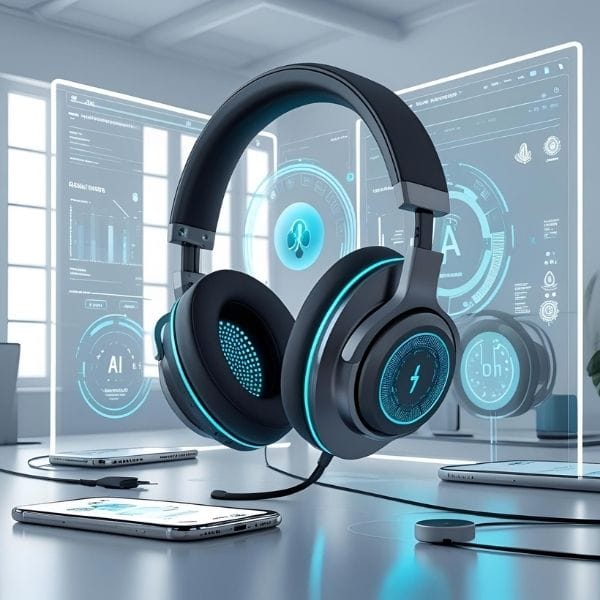
Headphones. Remember when they were just for listening to music? Those days are quickly fading. What started as simple audio output devices are now rapidly transforming into sophisticated health monitors, intelligent assistants, and immersive experience hubs.
This isn’t just about better sound quality anymore. We’re on the cusp of a revolution where your headphones will know your body, anticipate your needs, and seamlessly integrate into every aspect of your digital and physical life. In this deep dive, we’ll explore how biometrics, Artificial Intelligence, and radical new form factors are reshaping the future of personal audio.
Innovations Shaping the Future of Headphones
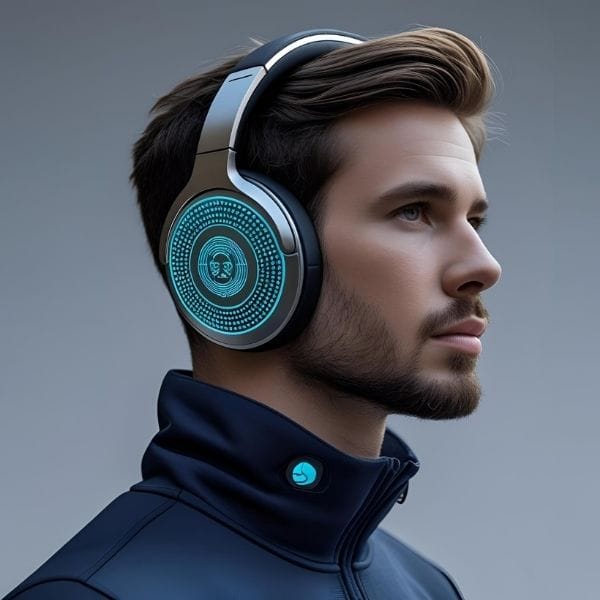
The landscape of personal audio is undergoing a profound transformation, driven by groundbreaking advancements that redefine the very Future of Headphones. We’re moving far beyond simple sound delivery into an era where Biometric Headphones will continuously monitor our health, providing real-time insights into our well-being. Coupled with sophisticated AI Headphones, these devices will offer truly personalized audio experiences, adapting to our unique hearing and environmental contexts. This convergence of technologies marks the rise of Smart Headphones 2025, becoming integral wearable audio tech that seamlessly blends into our daily lives. This is the dawn of Next-Gen Audio, promising not just superior sound, but intelligent companions that anticipate our needs and enhance our every interaction.
Biometric Integration: Your Health on Your Head
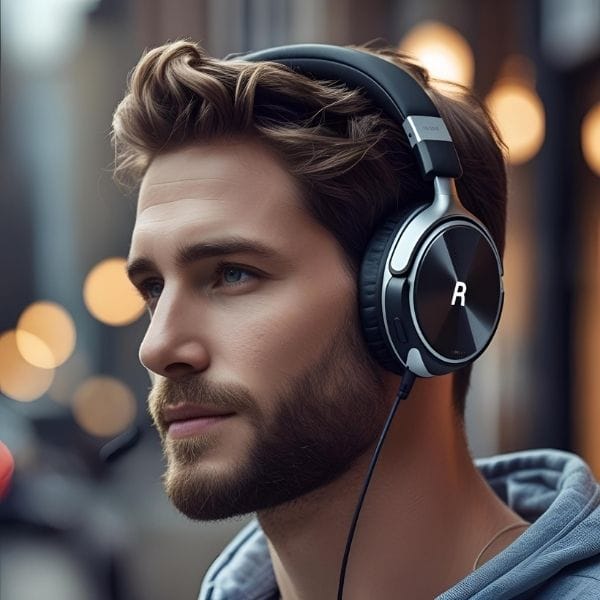
Imagine your headphones not just playing music, but also keeping tabs on your well-being. This isn’t science fiction; it’s the next frontier for personal audio. Headphones are becoming sophisticated health trackers, leveraging their close contact with your head and ears to gather vital data.
The ear canal, in particular, is an ideal spot for collecting biometric information. It’s stable, less prone to motion artifacts than a wrist, and has excellent blood flow. Here’s what’s already happening and what’s on the horizon:
- Heart Rate & HRV (Heart Rate Variability): Sensors embedded in the earbud or earcup can accurately measure your heart rate and even heart rate variability. This data is invaluable for fitness tracking (monitoring workout intensity, recovery) and stress management (HRV can be an indicator of stress levels).
- Body Temperature: Future headphones could monitor core body temperature, offering insights into fever, heatstroke risk during exercise, or even fertility cycles.
- EEG (Electroencephalography) / Brain Activity: This is more experimental but incredibly exciting. Headbands and even some earbud concepts are exploring how to measure brain waves to assess focus levels, sleep patterns, or even help with meditation and neurofeedback.
Use Cases & Benefits:
- Fitness Coaching: Real-time feedback on your exertion during a run, advising you to push harder or slow down based on your heart rate.
- Health Monitoring: Early warnings for potential health issues, detailed sleep cycle analysis, or tracking recovery post-illness.
- Mental Wellness: Guiding meditation sessions by monitoring brain states, or prompting stress-reduction exercises when high HRV is detected.
While existing models like the Jabra Elite Sport and Amazfit PowerBuds offered early glimpses, accuracy and battery life remain challenges that continuous innovation aims to overcome. Data privacy, of course, is a paramount concern as these devices become more intimate.
AI Integration: Your Intelligent Audio Companion
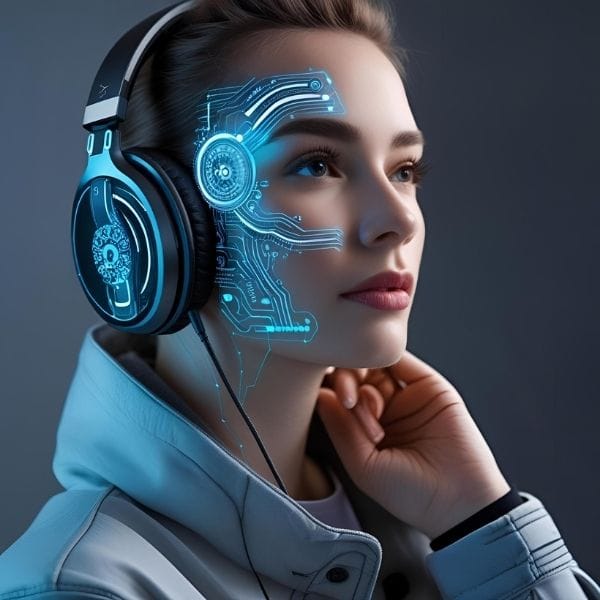
Artificial Intelligence is making headphones truly smart, transforming them from mere output devices into proactive, personalized audio companions. AI is the brain behind the next generation of auditory experiences.
Here’s how AI is integrating into your headphones:
- Adaptive Noise Cancellation (ANC): Beyond simply blocking noise, AI-driven ANC can analyze your environment in real-time and adapt the noise-cancelling profile. Imagine your headphones automatically switching from general chatter cancellation on a busy street to focused voice clarity in an office call.
- Personalized Audio Profiles: AI can learn your unique hearing preferences and adjust the sound output to perfectly match your ears and musical tastes. This goes beyond simple EQ, creating a truly tailored listening experience.
- Real-time Language Translation: While still evolving, AI-powered translation via headphones aims to break down language barriers instantly. Speak in your language, and the person listening hears it translated in theirs, and vice versa.
- Contextual Awareness: AI enables headphones to understand your environment and activities. This could mean automatically pausing music when you start a conversation, adjusting volume when you move from a quiet to a loud space, or even suggesting a specific playlist based on your location.
- Enhanced Voice Assistants: Expect more natural, nuanced, and powerful interactions with built-in voice assistants. AI will make these conversations smoother, more accurate, and better integrated into your daily workflow.
- AI-Powered Health Coaching: Combining biometric data with AI, headphones could offer personalized fitness advice, guided breathing exercises, or even reminders to take a break based on your stress levels.
These AI features promise a more seamless, intuitive, and hyper-personalized audio experience, making your headphones feel less like a gadget and more like an extension of yourself.
Beyond the Earcups: New Form Factors & Technologies
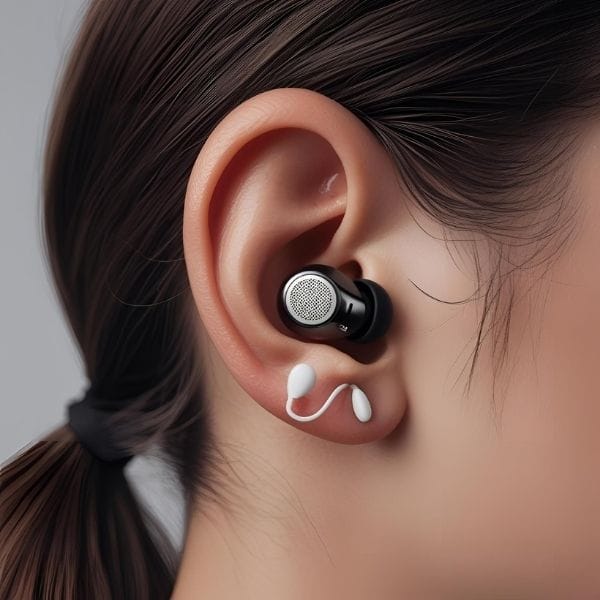
The future of headphones isn’t just about what’s inside; it’s also about how they look and feel, and where the audio actually comes from. We’re seeing exciting developments in form factors that blur the lines between audio, vision, and personal computing.
- Bone Conduction/Open-Ear Audio: These technologies deliver sound without covering your ears, allowing for situational awareness. Perfect for sports enthusiasts who need to hear traffic, or office workers who want to stay connected to their surroundings while listening to music or calls.
- Smart Glasses with Integrated Audio: Devices like Bose Frames and Amazon Echo Frames are already merging eyewear with audio, providing discreet sound delivery alongside augmented reality possibilities in the future.
- Invisible/Implantable Audio: While still largely speculative, the long-term vision for some is completely imperceptible audio delivery, integrating sound directly into our environment or even bodies.
- Advanced Materials & Ergonomics: Expect lighter, more durable, and self-adjusting designs that adapt perfectly to the user’s head shape for unparalleled comfort during extended wear.
- Haptic Feedback: Beyond just hearing, headphones could provide physical vibrations, adding a new layer of immersion to gaming, virtual reality, or even music, allowing you to “feel” the bass.
These innovations promise not only better sound but also a more natural and integrated way to experience audio without the traditional bulk or isolation of current headphones.
The Implications: Opportunities & Concerns
The rapid evolution of headphones brings both immense opportunities and significant ethical concerns.
Opportunities:
- Enhanced Productivity and Focus: Tailored audio environments and AI assistants can help you concentrate better at work or while studying.
- Improved Health and Wellness Monitoring: Constant, passive health tracking could lead to earlier detection of issues and more personalized health management.
- More Immersive Entertainment: Spatial audio, haptic feedback, and personalized soundscapes will make movies, games, and music more engaging than ever.
- Seamless Communication: Real-time translation and intelligent voice assistants can break down barriers and simplify daily interactions.
Concerns:
- Privacy: The collection of highly personal biometric, behavioral, and location data is a major concern. Who owns this data, and how is it protected from misuse?
- Security: As headphones become more connected and intelligent, they also become potential targets for cyberattacks, risking personal data breaches.
- Dependence: Over-reliance on these devices for health monitoring, communication, and entertainment could raise questions about digital well-being and disconnection from the real world.
- Ethical Considerations: Issues like data consent, bias in AI algorithms, and the potential for surveillance via these always-on devices will require careful regulation and public discussion.
Conclusion: The Personal Computing Device of the Future?

Headphones are no longer just about sound. They are evolving into miniature, powerful personal computing devices, seamlessly integrating into our lives with unprecedented intimacy. The combination of biometrics, sophisticated AI, and innovative form factors is redefining what “personal audio” truly means.
While the journey ahead is filled with exciting possibilities for enhanced well-being, productivity, and entertainment, it also demands careful consideration of privacy, security, and ethical implications. The headphones of tomorrow won’t just play your favorite songs; they’ll understand you, interact with your world, and potentially become your primary interface to the digital realm. The future of sound is intelligent, personalized, and profoundly integrated.

Further Reading: Dive Deeper into Audio Innovation
Ready to explore more about the cutting-edge advancements shaping how we listen? Check out these related articles and external resources:
📚 Internal Links: More from Gear For Audio
- The Latest Buzz: Essential Audio Gadgets for 2025
- The 10 Best Noise-Cancelling Headphones of 2025: Your Guide to Silent Serenity
- Earbuds Audiophile Tech 2025: The Latest Tech for Discerning Listeners
- Why Audio Compatibility Still Matters In 2025
- Top 5 Everyday Audio Gadgets
🔗 External Link: Trusted Insights on Future Tech


2n98ul
Pingback: Revolutionary Next-Gen Wireless Earbuds: Transform How You Listen & Live (2025)